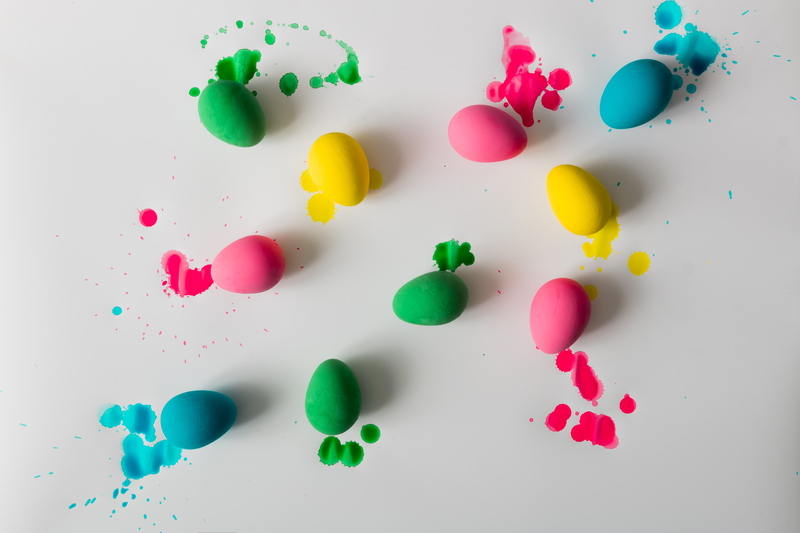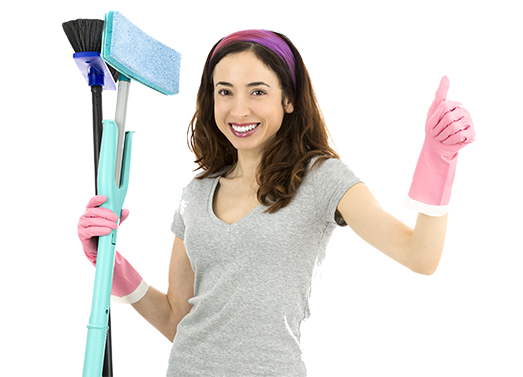Mastering the Art of a Sustainable House Cleaning Routine
Posted on 03/07/2025
Mastering the Art of a Sustainable House Cleaning Routine
Mastering the art of a sustainable house cleaning routine is more than just a trend--it's a commitment to a healthier home and a cleaner planet. As awareness about environmental protection grows, many homeowners are searching for the most eco-friendly and effective ways to maintain their living spaces. This comprehensive guide will walk you through everything you need to know to establish and maintain a greener cleaning regimen that benefits your family and the Earth.

Why Embrace a Sustainable Home Cleaning Routine?
Traditional cleaning methods often rely on chemical-laden products and excessive resources, leading to indoor pollution and environmental harm. Transitioning to a sustainable cleaning routine means:
- Reducing exposure to toxic substances in your home
- Decreasing plastic waste and packaging
- Preserving natural resources like water and energy
- Minimizing your carbon footprint and supporting a healthier planet
By making simple but impactful changes, you can enjoy a spotless home without compromising your well-being or the environment.
Key Principles for Sustainable House Cleaning
1. Choose Eco-Friendly Cleaning Products
The cornerstone of a sustainable cleaning routine is using products that are safe for both people and the environment. Here's how to make greener choices:
- Opt for plant-based cleaners free from harsh chemicals, synthetic fragrances, and dyes.
- Select brands that offer biodegradable and non-toxic formulas.
- Avoid single-use plastics by purchasing refillable or bulk items.
Common green household alternatives include white vinegar, baking soda, lemon juice, and castile soap. These ingredients are natural, versatile, and widely accessible.
2. Adopt Minimalist Cleaning Practices
It's easy to fall into the trap of owning dozens of cleaning products. However, a minimalist approach can reduce waste and clutter:
- Identify multipurpose products suitable for various surfaces and tasks.
- Use reusable cleaning cloths instead of disposable wipes and paper towels.
- Implement the "less is more" philosophy--quality over quantity wins in sustainability.
3. Conserve Water and Energy
Conserving resources is essential in a sustainable house cleaning routine. Keep the following eco-friendly tips in mind:
- Turn off the tap when scrubbing or wiping surfaces.
- Use cold water for most cleaning tasks to save energy.
- Air-dry rags and cleaning cloths instead of using an electric dryer.
- Schedule cleaning during daylight to minimize artificial lighting.
4. Reduce, Reuse, and Recycle Cleaning Supplies
Waste reduction is foundational to sustainability. Here's how to create less waste during your cleaning routine:
- Repurpose old T-shirts or towels as cleaning rags.
- Choose recyclable packaging and dispose of it responsibly.
- Buy in bulk to minimize single-use packaging.
- Compost paper towels (if used) and natural sponges.
5. Use Natural Scents
Instead of synthetic air fresheners, opt for natural ways to keep your home smelling fresh:
- Simmer citrus peels or cinnamon sticks on the stove.
- Make DIY room sprays using essential oils.
- Open windows to naturally ventilate your home and reduce dust build-up.
Building an Eco-Friendly Cleaning Routine: Step-by-Step
Step 1: Set a Realistic Cleaning Schedule
Consistency is key in any routine. Decide the frequency of each cleaning task and stick to it:
- Daily: Wipe kitchen counters, wash dishes, tidy up living spaces.
- Weekly: Mop floors, clean bathrooms, change bed linens, dust surfaces.
- Monthly: Clean windows, deep-clean appliances, rotate seasonal items.
This approach prevents build-up, making it easier to use gentler methods and products.
Step 2: Prepare Your Green Cleaning Arsenal
Gather basic supplies for your green house cleaning routine:
- Glass spray bottles for homemade solutions
- Microfiber cloths (highly reusable and effective at trapping dust)
- Natural scrub brushes and sponges
- White vinegar, baking soda, castile soap, lemon juice, and essential oils
These essentials support sustainability by reducing plastic waste and chemical exposure.
Step 3: Follow Eco-Friendly Techniques for Every Room
Kitchen Cleaning
- Countertops: Wipe with a solution of vinegar and water. For tough stains, make a paste with baking soda.
- Appliances: Wipe down with damp microfiber cloths to avoid streaks and residue.
- Floors: Mop with a biodegradable cleaner or a DIY mix of castile soap and water.
Bathroom Cleaning
- Remove soap scum with a mixture of vinegar and baking soda.
- Toilet bowls sparkle using a handful of baking soda and a splash of vinegar, left to fizz before scrubbing.
- Prevent mold by keeping surfaces dry and running fans or opening windows for ventilation.
Living Room and Bedroom Cleaning
- Dust surfaces with microfiber cloths to capture particles without chemicals.
- Vacuum using HEPA-equipped cleaners for maximum efficiency and better indoor air quality.
- Wash bedding and curtains with plant-based laundry detergent.
Window and Glass Care
- Spritz glass surfaces with a 1:1 white vinegar and water solution.
- Wipe clean with a lint-free cloth for streak-free shine.
Step 4: Maintain and Review Your Routine
Track your sustainable cleaning progress by making notes of:
- What works well and where improvements are needed
- How much less waste you're producing
- Any areas where you can swap in even greener alternatives
Adjust your schedule and supplies as you go, striving for continuous improvement.
The Benefits of a Sustainable Home Cleaning Regimen
When you adopt a sustainable cleaning routine, you reap far-reaching rewards, including:
- Healthier indoor air and fewer allergens
- Lower risk of exposure to toxic chemicals
- Reduced household waste and plastic consumption
- More cost savings over time by buying in bulk and making your own cleaners
- The satisfaction of protecting the planet for future generations
Common Myths About Sustainable House Cleaning
Myth 1: Green Cleaners Aren't Effective
Reality: Many natural products like vinegar, baking soda, and castile soap rival, and often exceed, their chemical counterparts for cleaning power. Consistency and proper technique make all the difference.
Myth 2: Sustainable House Cleaning Routines Are Difficult to Maintain
Reality: Once you establish your eco-friendly routine, it becomes second nature. Most green practices save time, money, and effort.
Myth 3: You Need to Replace Everything with Green Alternatives Right Away
Reality: The most sustainable path is to use what you already have and replace products over time as they run out, gradually building your green stash.
DIY Recipes for Eco-Friendly Cleaning Solutions
- All-Purpose Cleaner: Mix 1 cup white vinegar, 1 cup water, and 10 drops lemon essential oil in a spray bottle.
- Scrubbing Paste: Mix 1/2 cup baking soda with enough water to form a paste; add 1 tablespoon castile soap for extra lifting power.
- Glass Cleaner: Combine 1 cup water, 1 cup vinegar, and a few drops of your favorite essential oil in a spray bottle.
- Wood Polish: Mix 1/4 cup olive oil with 1/4 cup vinegar and a few drops lemon oil for shine and nourishment.
These recipes use simple, sustainable ingredients and are safe for your family and pets.
How to Involve the Family in Sustainable Cleaning
Creating an eco-friendly home is a team effort. Here's how to make it fun and educational:
- Assign age-appropriate tasks to kids, like dusting or sorting recyclables.
- Teach the value of reducing, reusing, and recycling during family cleaning time.
- Let children help mix natural cleaners to spark interest in sustainability.
- Celebrate the collective impact your family makes!

Frequently Asked Questions About Sustainable Home Cleaning
Are natural cleaning products safe for all surfaces?
While most eco-friendly cleaning solutions are gentle, always test on a small area first. Some surfaces like untreated marble or granite can be sensitive to vinegar or citrus.
How can I dispose of empty cleaning product containers responsibly?
Check local guidelines to recycle bottles and cartons where possible. Some brands offer take-back or refill programs to further reduce waste.
What's the most important habit for sustainable cleaning?
Consistency and mindfulness! Building habits like using reusable cloths, making DIY cleaners, and minimizing waste go a long way.
Final Thoughts: Making Sustainable House Cleaning Second Nature
Mastering the art of a sustainable house cleaning routine is a rewarding journey. By adopting small changes--choosing green products, conserving water, reducing waste, and involving the whole family--you'll keep your living space fresh and your conscience clear. Remember, it's not about perfection but continual progress. Start where you are, use what you have, and embrace the steps toward a more eco-conscious, healthy home.
Ready to transform your cleaning routine? Begin with just one change today--swap out a chemical cleaner for a homemade alternative, switch to reusable cloths, or schedule your cleaning during the daytime. Every step, no matter how small, contributes to a cleaner home and a cleaner planet.



